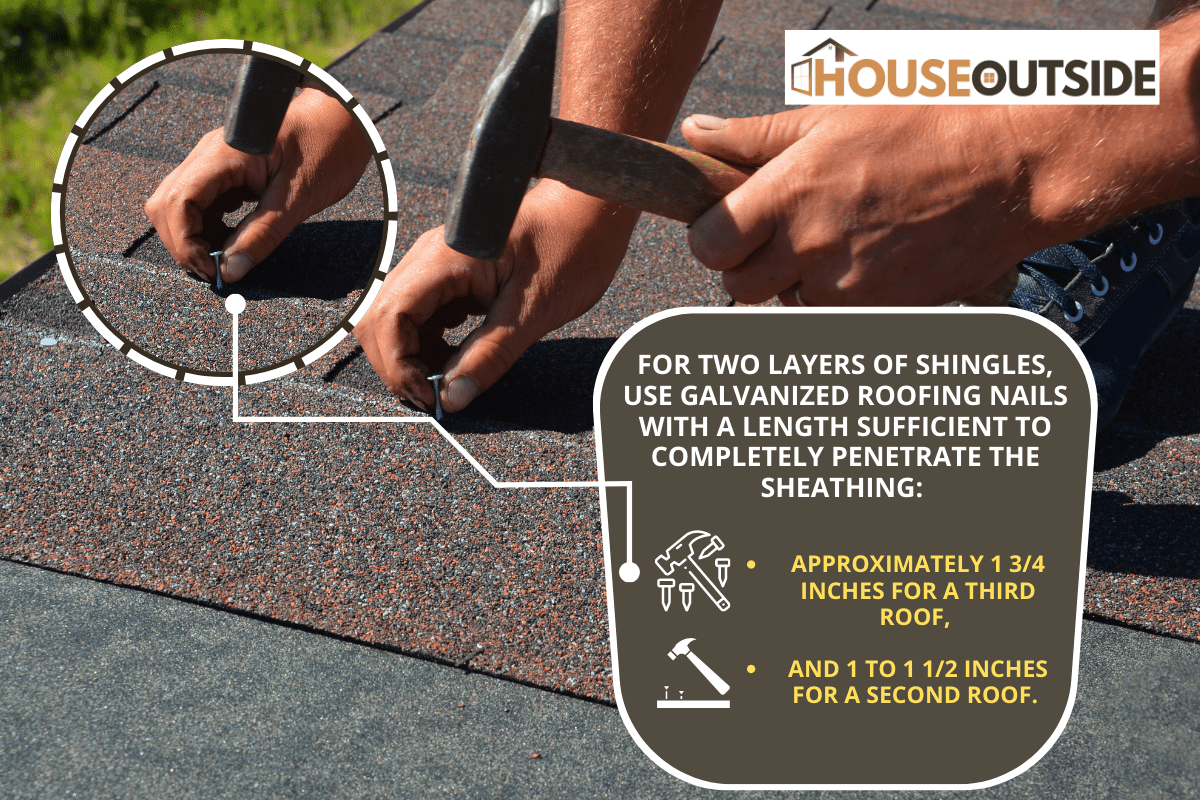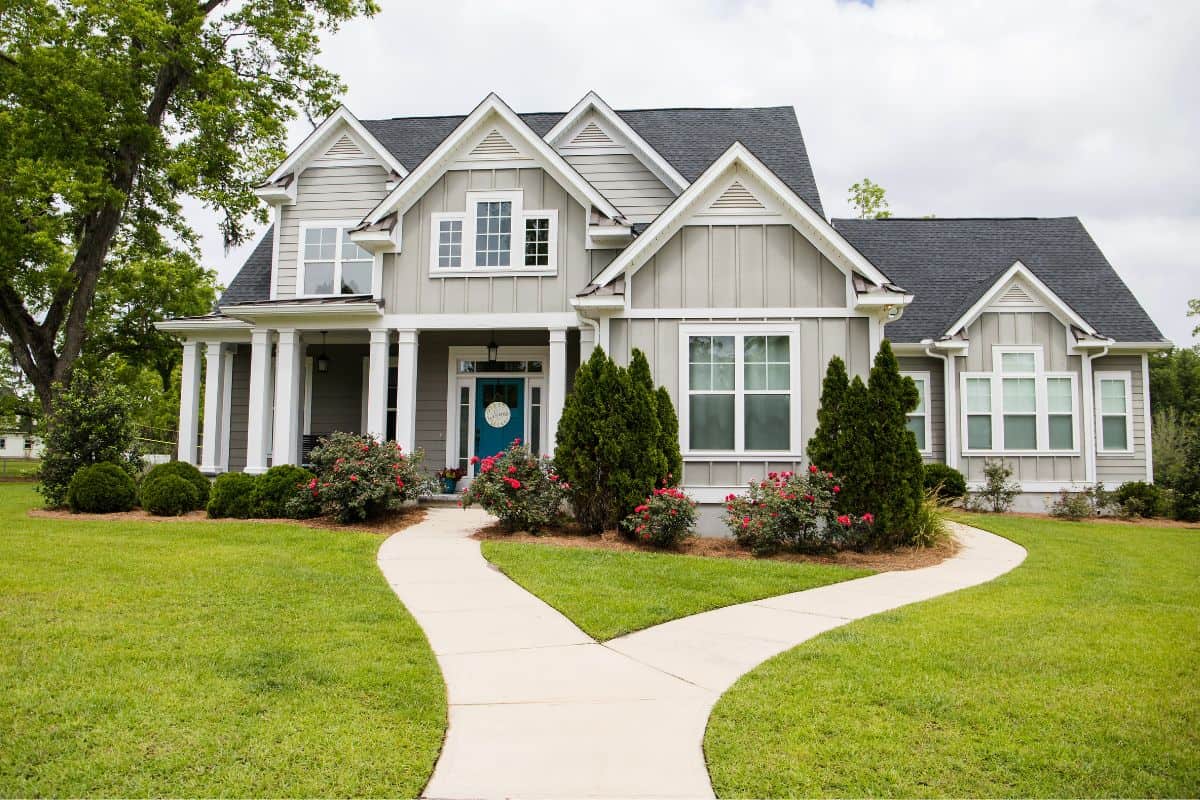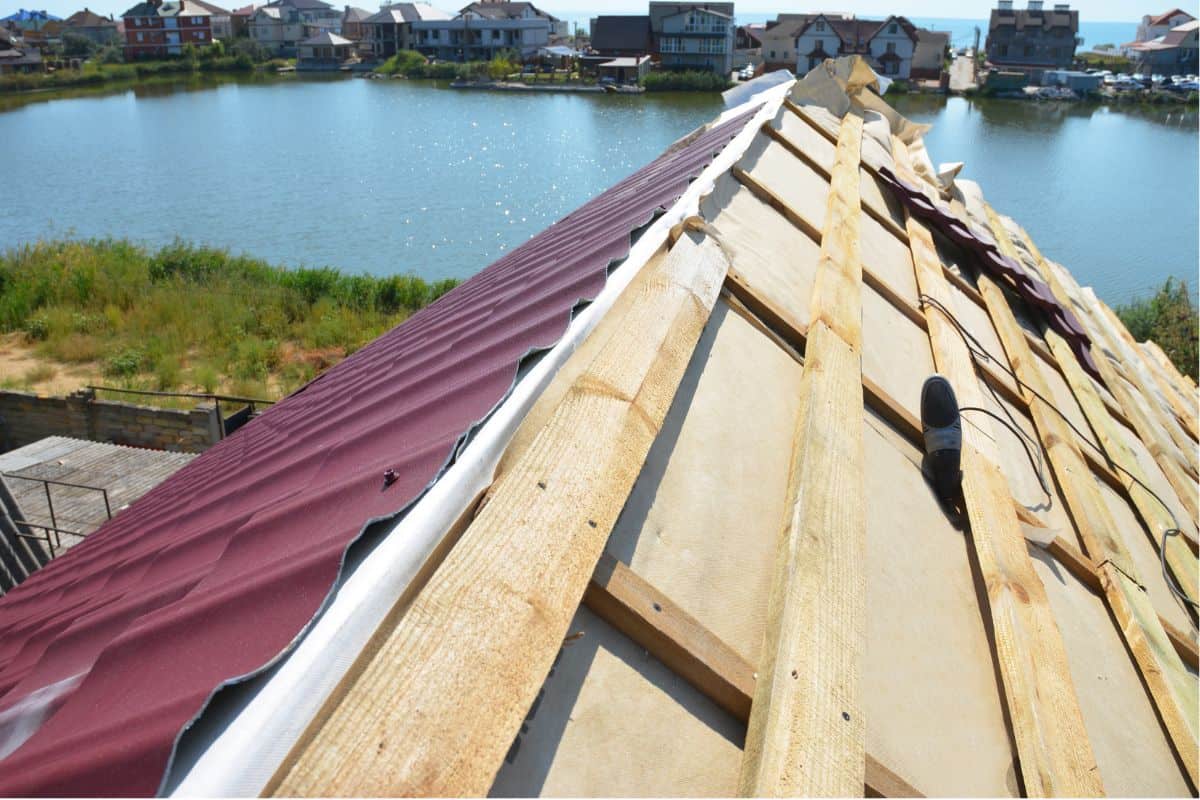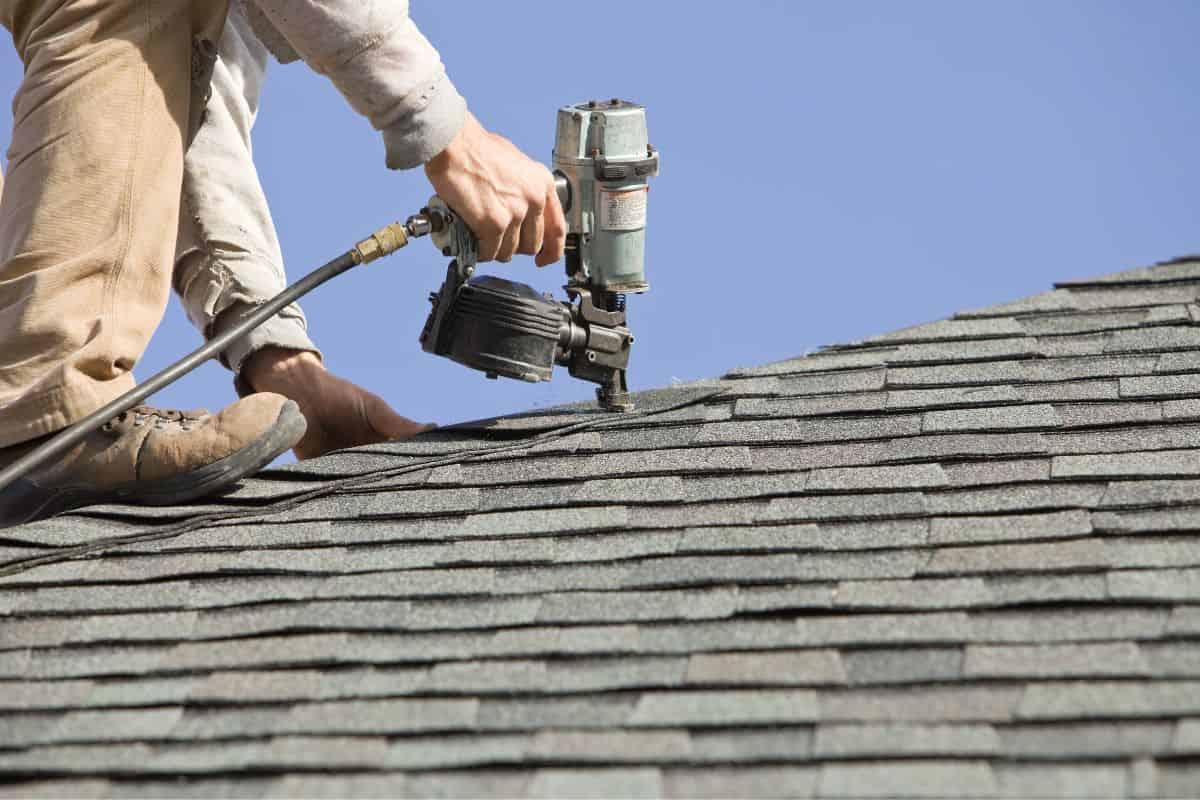Knowing the right nails to use for your shingles will prevent the roof from falling apart and the nails coming off in the future. Are you keen on knowing the right nails to use for your two-layer shingles? You're on the right page. After doing our research and consulting experts, here's what we know.
For two layers of shingles, use galvanized roofing nails with a length sufficient to completely penetrate the sheathing:
- approximately 1 3/4 inches for a third roof,
- and 1 to 1 1/2 inches for a second roof.
The sheathing will be less likely to fracture if new rows are nested one beneath the other, keeping new nails 2 inches below the old.
When affixing shingles, there are some strategies you can use to know the right type of nails to use. The most important details are the materials to use and the type of roof you have. Keep reading further to know more about your shingles' roofing.

What is a Two-Layer Shingle?
Instead of removing the old shingles completely to expose the sheathing and installing new ones, "several layers of shingles" simply refers to laying a new asphalt shingle roof on top of the old one.
Usually, there is only one layer of shingles on older, traditional homes. Contacting a qualified roofing contractor who can assess your home and provide you with the finest advice is the ideal way to determine how many layers you need.
There are numerous types of materials and styles available for roof shingles. Their insulation, tensile strength, and energy distribution are varied.
As a homeowner, you must take special care to select building materials that are appropriate for your location and climate.
You should select lighter-colored shingles if you live in a hot region since they reflect heat. Darker roof shingles, on the other hand, will absorb more light and are therefore ideal for places with a chilly climate.
Shingles serve a much more useful purpose than simply enhancing the appearance of the house.
The home's defense against rain, hail, and snow is greatly enhanced by the overlapping design of the tiles. To maintain balance and protect the home's structure, the structure should distribute the weight equally.
However, to reduce the long-term damage if the water penetrates the shingles, a roofing company must be notified.

What Size of Roofing Nails Should You Use For Your Two Layers of Shingles?

On a 3/4-inch deck or a plank deck, you should use a one to half-inch nail if you're adding a layer of asphalt shingles over an existing layer of asphalt shingles.
Check here to see Metabo HTP one-half-inch nail on Amazon.
A one to half-inch nail will do if the thickness of your decking is less than a three-quarter inch. Use a one to half-inch roofing nail for installing dimensional shingles on top of an existing layer of dimensional shingles.
Is It Okay to Put Two Layers of Shingles On a Roof?
Even though adding a second layer of shingles to your roof, this method has several disadvantages, there are also a few advantages that homeowners typically consider.
The cost savings perspective is the most important, though not by much.
Advantages of Adding Two Layers of Shingles
Let's quickly go over the advantages of installing two layers of shingles on your roof.
It Is Cheaper For The Homeowner
The price of installing a roof overlay is around 25% higher than installing a full take-off roof. Several sources contribute to this cost reduction. Little trash is produced because the original layer is left in place.
Only the cut-offs from the new shingles, the ridge caps, and other unrelated debris will be generated, which will result in reduced dump fees.
There are no labor costs associated with tearing up the original roof and cleaning up the shingles from the ground in addition to the money saved on dump fees.
It is Convenient
In a perfect world, the roofing contractor would find it convenient to forgo removing the old shingles because there would be little cleanup and no tear-off required.
The customer will also find it convenient because there is little chance that the removal of shingles will harm the landscaping or the flowers, and there is less risk of injury from the additional roofing debris around the house.
It Saves Time
The roofer can complete the installation process much more quickly because the tear-off process is not necessary.
The work is finished much more quickly if there aren't any active leaks on the current roof and no repairs are required. To save money, the roofing contractor also foregoes installing underlayment.
The few advantages of installing a second layer of shingles will rapidly fade into the background once you realize how many disadvantages outweigh the few positives.
Disadvantages of Adding Two-Layer Shingle
Let's examine a few drawbacks that can cause you to reconsider adding layers of shingles to your roof.
Manufacturer's Warranty Becomes Null and Void
The majority of roof shingle manufacturers, if not all of them, will void any form of shingle guarantee that was part of the roof installation.
In the unlikely event that they do extend a warranty for a second shingle layer, they will only do so if a licensed roofing contractor completes the work and installs the roof to the manufacturer's specifications they have provided.
Sometimes tearing off the existing layer will be simpler than installing a second layer following manufacturer specifications.
You may see how quickly the guarantee is worthless even if the shingles are not being applied for more than a second by reading the fine print on the manufacturer's shingle warranty for the specific shingle you intend to install
Curb Appeal

When architectural shingles are used as the first layer of shingles on a roof, the second layer will always resemble the first layer in shape.
Chances are they will ultimately show up on the top layer of shingles if the first layer of shingles had any blistering, curling, dips, or other flaws on them.
Additionally, even with a fresh layer laid on top of it, any dips in the plywood or regions where it has lifted will still be evident.
You Cannot Replace The Underlayment or The Roof Decking

New synthetic underlayments that replace felt paper as a water barrier have been introduced to the market as technology has advanced.
Any roof installation in colder climates now includes an ice and water membrane as standard equipment. During the chilly winter months, ice formation can happen close to eaves and in valleys.
The majority of older roofs still have ordinary felt paper placed on them because this technology is still relatively new.
With these pros and cons listed above, it's safe to say that the choice to have a second layer of shingles installed on your roof is ultimately up to you as the homeowner.
Ensure that everything will be done to ensure that the roof lifespan may be increased, even with a second layer, if you decide to add the second layer by having a thorough conversation with the roofing contractor who will be doing the work.
To ensure a smooth procedure and eliminate any misunderstandings regarding what will and won't be done, as well as what will be covered under warranty if a leak develops after the roof is built, it is best to have everything written, including workmanship warranties.
How Long Should Roofing Nails Be For Asphalt Shingles?
To ensure that nails sufficiently penetrate and embed in the roof sheathing, roofing nails should be 1-1/4 to 2 inches long. Add the thickness of the sheathing to the thickness of the shingles and underlayment to get the proper length for roofing nails
The material that the roofing nail will be bored into dictates how long it should be. Longer nails are needed for some materials, whereas shorter ones can be used on those that don't require deep penetration.
Is It Better to Hand-Nail Shingles?

By manually hammering nails into shingles, a roofer can position the nail on the correct nail line and then drive the nail through.
The hammer's head ends flush with the top of the shingles, ensuring that the nails are positioned correctly every time.
Some roofers think that hand-nailing the shingles provides them greater control over the operation. If the nail is deep enough and in the proper spot, they can tell.
What Causes Nails to Pop Through Shingles?
The nails may pop up and raise the shingles as the temperature changes as a result of expansion and contraction. Ensure that your roof is sufficiently ventilated.
Another reason for nail pops could be that the roof's shingles weren't put with enough force. Other typical causes include a short nail or having nails in the seams.
In Summary
For a roof to last for a long time, picking the proper size of roofing nail is crucial. Use 1 1/2-inch nail for shingles on a 3/4-inch deck or a plank deck and 2/8 inches for a 2/16-inch rafter. Nails may pop out of roof shingles as a result of temperature changes.
To learn more on roofs, check out these related posts:




